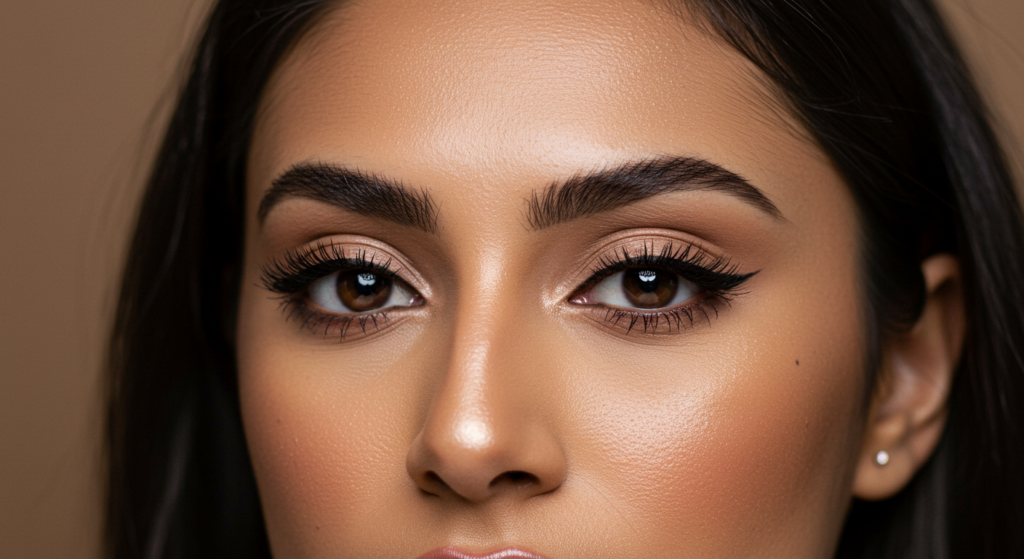As a surgeon deeply involved in facial aesthetics and reconstructive procedures, I’ve had the privilege of observing the intricate details that contribute to overall facial harmony and perceived beauty. Among these subtle yet powerful features, the canthal tilt of the eyes stands out. Often overlooked in casual observation, the angle at which the outer corner of your eye sits in relation to the inner corner can significantly impact your overall appearance, conveying different impressions of youthfulness, alertness, and even emotional state.
In this comprehensive blog post, we will delve into the fascinating world of canthal tilt. We’ll explore the three primary types – upward, downward, and neutral – dissecting their characteristics, the aesthetic perceptions associated with them, and the factors that influence their appearance. Whether you’re simply curious about facial features, considering cosmetic enhancements, or a fellow professional seeking a deeper understanding, this guide aims to provide a thorough and insightful overview.
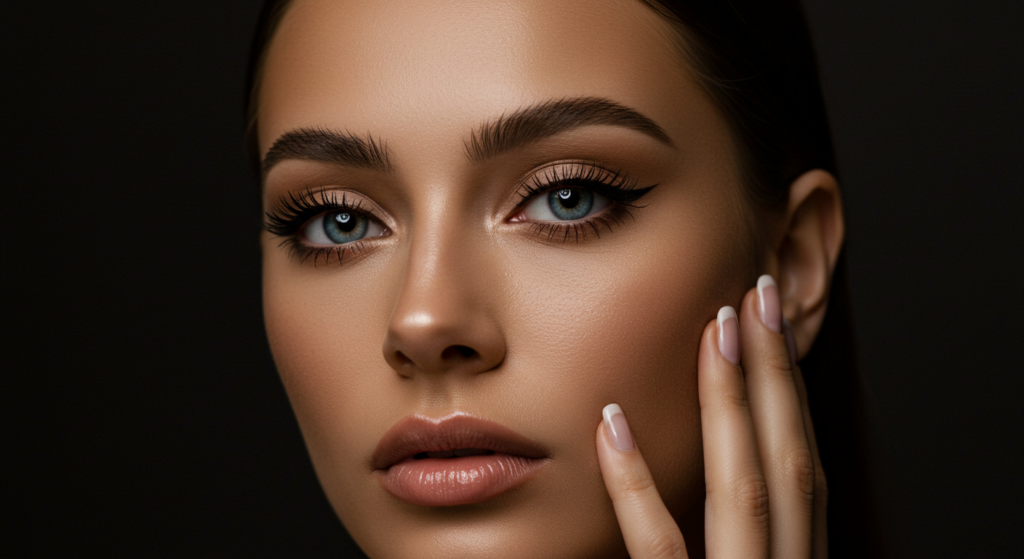
Table of Contents
What Exactly is Canthal Tilt? Defining the Key Term
Before we delve into the specific types, it’s crucial to establish a clear understanding of what canthal tilt truly is. In simple terms, canthal tilt refers to the angle formed by the line connecting the medial canthus (the inner corner of the eye) and the lateral canthus (the outer corner of the eye) with a horizontal reference line.
Imagine drawing a straight line from the inner corner of your eye to the outer corner. Now, picture a perfectly horizontal line running across your face. The angle formed between these two lines is your canthal tilt. This seemingly minor angle plays a surprisingly significant role in shaping the overall appearance of your eyes and, consequently, your entire face.
The Anatomy Behind the Angle: A Surgeon’s Perspective
From an anatomical standpoint, the canthal tilt is influenced by a complex interplay of various structures. The position and tone of the orbicularis oculi muscle, the ligaments supporting the eyelids (particularly the lateral canthal tendon), and the underlying bony structure of the orbit all contribute to the final angle.
- Orbicularis Oculi Muscle: This circular muscle surrounding the eye plays a crucial role in eyelid closure and facial expressions. Its tone and laxity can directly affect the position of the canthi.
- Lateral Canthal Tendon: This fibrous band anchors the outer corner of the eyelid to the bone of the lateral orbital rim. Its strength and position are critical in maintaining the canthal tilt.
- Bony Orbit: The shape and structure of the eye socket itself provide the foundational framework that influences the positioning of the soft tissues and, consequently, the canthal tilt.
Understanding these anatomical underpinnings is essential, especially when considering surgical interventions aimed at modifying the canthal tilt. As surgeons, we meticulously consider these structures to achieve natural-looking and harmonious results.
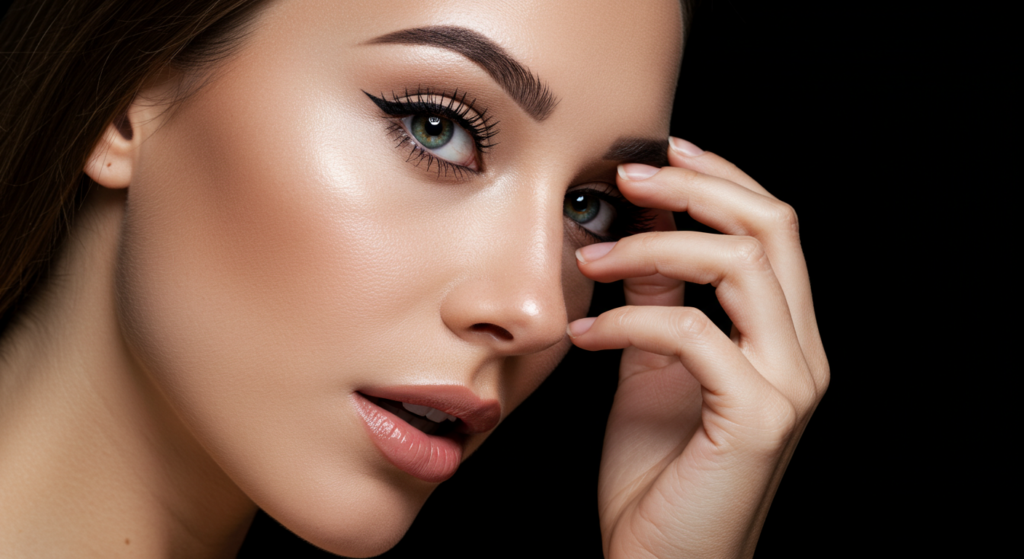
Measuring Canthal Tilt: A Practical Guide
While a precise measurement of canthal tilt often requires specialized tools and image analysis software used in clinical settings, you can get a general idea of your own canthal tilt by observing yourself in a mirror or analyzing photographs.
- Find Your Canthi: Locate the inner corner (medial canthus) and outer corner (lateral canthus) of your eye.
- Visualize the Line: Imagine a straight line connecting these two points.
- Compare to Horizontal: Mentally compare this line to a horizontal reference. Is the outer corner higher, lower, or at the same level as the inner corner?
It’s important to note that subtle variations are common, and slight asymmetries between the two eyes can also occur.
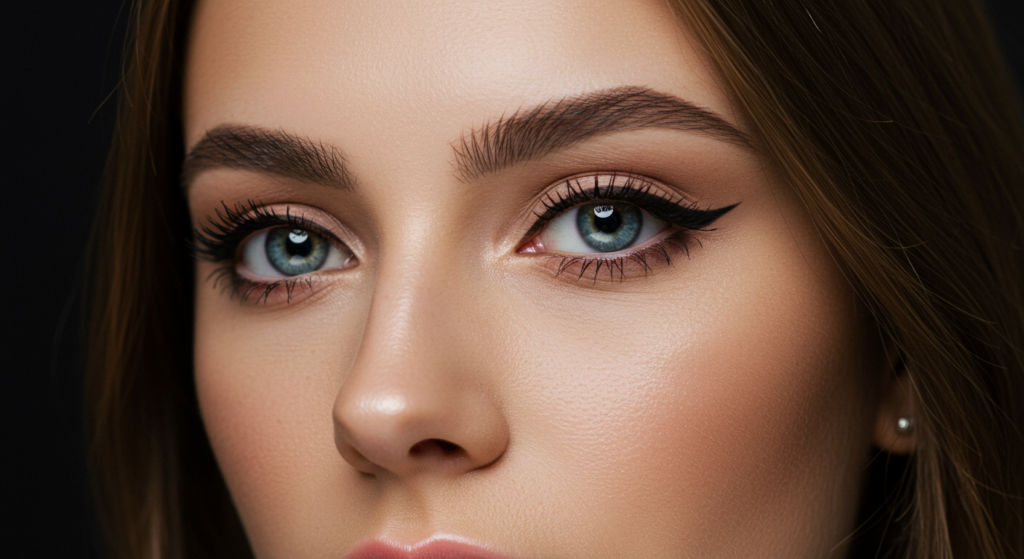
The Three Primary Types of Canthal Tilt: Upward, Downward, and Neutral
Now, let’s delve into the characteristics and perceptions associated with each of the three primary types of canthal tilt.
## Upward Canthal Tilt: The Allure of the “Almond Eye”
An upward canthal tilt is characterized by the lateral canthus (outer corner) being positioned higher than the medial canthus (inner corner). This creates an upward slant to the eye, often described as an “almond shape.”
### Aesthetic Characteristics and Perceptions
Upward tilted eyes are widely considered aesthetically pleasing and are often associated with:
- Youthfulness: The upward slant can contribute to a more youthful and energetic appearance.
- Alertness: This eye shape often conveys a sense of being awake, engaged, and attentive.
- Attractiveness: In many cultures, upward tilted eyes are considered a desirable and attractive feature.
- Exoticism: The almond shape can sometimes lend an exotic or captivating quality to the face.
- Femininity: While both men and women can have an upward canthal tilt, it’s often perceived as a classically feminine trait.
Think of iconic figures and celebrities often praised for their beauty – many possess a noticeable upward canthal tilt. This has contributed to its desirability in cosmetic enhancements.
### Factors Influencing Upward Canthal Tilt
Several factors can contribute to an naturally occurring upward canthal tilt:
- Genetics: This is often the primary determinant of one’s natural canthal tilt. Certain genetic predispositions can lead to a more pronounced upward slant.
- Facial Structure: The underlying bone structure of the face, particularly the shape of the orbital rim and the zygomatic arch (cheekbone), can influence the position of the canthi.
- Ethnic Background: Certain ethnicities may have a higher prevalence of individuals with an upward canthal tilt.
### Surgical Considerations for Enhancing Upward Canthal Tilt
For individuals desiring a more pronounced upward canthal tilt, several surgical procedures can be considered. It’s crucial to emphasize that any surgical intervention should be approached with careful consideration, realistic expectations, and a thorough consultation with a qualified and experienced surgeon.
- Canthoplasty: This surgical procedure involves repositioning the lateral canthal tendon to a higher position. It can effectively create or enhance an upward canthal tilt and also tighten the lower eyelid. Canthoplasty is often performed in conjunction with other eyelid surgeries, such as blepharoplasty (eyelid lift).
- Indications: Individuals with a neutral or downward canthal tilt who desire a more youthful and alert appearance. It can also be used to correct lower eyelid laxity or scleral show (where the white of the eye below the iris is excessively visible).
- Technique: The procedure typically involves making a small incision in the upper eyelid crease or at the outer corner of the eye. The lateral canthal tendon is then identified, detached, and reattached to the periosteum (the membrane covering the bone) at a higher position. The excess skin and tissue may be trimmed, and the incision is closed with fine sutures.
- Risks and Complications: As with any surgical procedure, canthoplasty carries potential risks, including infection, bleeding, scarring, asymmetry, dry eyes, temporary or permanent changes in eyelid sensation, and the possibility of needing revision surgery. It’s crucial to have a detailed discussion with your surgeon about these potential risks.
- Canthopexy: This procedure aims to support and tighten the lateral canthal tendon without necessarily repositioning it significantly upward. It’s often used to address mild lower eyelid laxity or to provide additional support during other eyelid surgeries. While it may result in a subtle lift, it’s generally less effective than canthoplasty for creating a significant upward canthal tilt.
- Indications: Mild lower eyelid laxity, preventative measure during blepharoplasty, subtle enhancement of the lateral canthus.
- Technique: Canthopexy typically involves making a small incision at the outer corner of the eye. Sutures are then used to secure the lateral canthal tendon to the underlying periosteum, providing support and tightening.
- Risks and Complications: Similar to canthoplasty, canthopexy carries risks such as infection, bleeding, scarring, and asymmetry, although the likelihood of significant complications may be lower due to the less invasive nature of the procedure.
- Lower Blepharoplasty with Lateral Canthal Suspension: In some cases, an upward canthal tilt can be indirectly achieved or enhanced during a lower blepharoplasty. By carefully addressing excess skin and fat in the lower eyelid and incorporating a lateral canthal suspension technique, the outer corner of the eye can be subtly lifted and supported.
- Indications: Lower eyelid bags, excess skin, and a desire for a more youthful and refreshed appearance with a potential subtle lift to the outer corner of the eye.
- Technique: Lower blepharoplasty involves making an incision either just below the lash line or inside the lower eyelid (transconjunctival approach). Excess fat and skin are removed or repositioned. A lateral canthal suspension involves securing the outer edge of the lower eyelid to the underlying bone or periosteum to provide support and prevent a rounded or sad appearance. This suspension can contribute to a subtle upward tilt.
- Risks and Complications: Risks associated with lower blepharoplasty include bruising, swelling, dry eyes, temporary blurred vision, lower eyelid retraction (pulling down of the lower eyelid), and asymmetry. The addition of lateral canthal suspension carries similar risks to canthopexy.
It’s paramount for anyone considering these procedures to have realistic expectations and to understand that the goal is to achieve a natural and harmonious result that complements their overall facial features. A thorough consultation with a board-certified surgeon experienced in these techniques is essential to discuss individual goals, assess candidacy, and understand the potential risks and benefits.
## Downward Canthal Tilt: The Perception of Melancholy
A downward canthal tilt occurs when the lateral canthus (outer corner) is positioned lower than the medial canthus (inner corner). This creates a downward slant to the eye.
### Aesthetic Characteristics and Perceptions
Downward tilted eyes are often associated with:
- Sadness or Melancholy: The downward slant can sometimes convey an impression of sadness, fatigue, or pensiveness.
- Tiredness: This eye shape can contribute to a perceived lack of energy or a tired appearance.
- Aging: As we age, the supporting structures around the eyes can weaken, leading to a gradual descent of the lateral canthus and a more pronounced downward tilt.
- Gentleness or Kindness: In some contexts, a subtle downward tilt might be perceived as conveying gentleness or kindness.
While not always considered the most conventionally desirable feature in all cultures, a subtle downward tilt can be a natural and characteristic feature for many individuals.
### Factors Influencing Downward Canthal Tilt
Several factors can contribute to a downward canthal tilt:
- Genetics: Similar to upward tilt, genetics play a significant role in determining the natural angle of the eyes.
- Aging: The natural aging process leads to a loss of elasticity in the skin and weakening of the supporting ligaments around the eyes, often resulting in a downward migration of the lateral canthus.
- Gravity: Over time, the effects of gravity can contribute to the sagging of the eyelids and the descent of the outer corners of the eyes.
- Certain Medical Conditions: In rare cases, certain medical conditions affecting the facial nerves or muscles can lead to a downward canthal tilt.
### Surgical Considerations for Addressing Downward Canthal Tilt
Individuals concerned about a pronounced downward canthal tilt and its associated perceptions may consider surgical options to create a more neutral or slightly upward slant.
- Upper Blepharoplasty: While primarily focused on removing excess skin and fat from the upper eyelid, an upper blepharoplasty can indirectly improve the appearance of a mild downward canthal tilt by lifting the upper eyelid and reducing heaviness that might accentuate the downward slant.
- Indications: Excess skin and fat in the upper eyelids that contribute to a tired or aged appearance and may indirectly emphasize a downward canthal tilt.
- Technique: Upper blepharoplasty involves making an incision in the natural crease of the upper eyelid. Excess skin and fat are removed or repositioned, and the incision is closed with fine sutures. This can create a more open and refreshed appearance to the upper eye area.
- Risks and Complications: Risks include bruising, swelling, dry eyes, temporary blurred vision, asymmetry, and in rare cases, difficulty closing the eyes completely.
- Midface Lift: A midface lift addresses sagging skin and tissue in the cheeks and lower eyelids. By lifting the midface, the support for the lower eyelid and the lateral canthus can be improved, potentially resulting in a subtle elevation of the outer corner of the eye and a reduction in the downward tilt.
- Indications: Sagging cheeks, loss of volume in the midface, and a desire to improve the appearance of the lower eyelids and potentially lift a mild downward canthal tilt.
- Technique: Various techniques exist for midface lifts, involving incisions typically made in the hairline, around the ears, or inside the mouth. The underlying tissues are lifted and repositioned to restore a more youthful contour.
- Risks and Complications: Risks include bruising, swelling, temporary nerve weakness, asymmetry, and changes in skin sensation.
- Lateral Canthal Support Procedures (as discussed under Upward Canthal Tilt): Procedures like canthopexy, while primarily used for upward tilt, can also be employed to provide support to the lateral canthus and prevent or address further downward migration, resulting in a more neutral or slightly elevated appearance. The specific approach would depend on the individual’s anatomy and desired outcome.
It’s crucial to understand that completely reversing a significant downward canthal tilt can be challenging and may not always be desirable, as it could lead to an unnatural appearance. The goal of surgical intervention in these cases is often to achieve a more balanced and refreshed look.
## Neutral Canthal Tilt: The Epitome of Balance
A neutral canthal tilt is characterized by the lateral canthus (outer corner) being positioned at approximately the same level as the medial canthus (inner corner).
### Aesthetic Characteristics and Perceptions
Neutral tilted eyes are often associated with:
- Balance and Harmony: This eye shape is considered a balanced and harmonious feature that complements other facial features without drawing undue attention.
- Versatility: Neutral eyes can convey a wide range of expressions depending on other facial features and makeup.
- Classic Beauty: This is often seen as a classic and timeless eye shape.
Individuals with a neutral canthal tilt may not typically seek surgical modifications to this aspect of their appearance, as it is often considered aesthetically pleasing and well-proportioned.
### Factors Influencing Neutral Canthal Tilt
A neutral canthal tilt is primarily determined by genetics and a balanced development of the facial structures. It represents a midpoint between the upward and downward slants.
### Surgical Considerations for Neutral Canthal Tilt
Surgical intervention is generally not sought for a neutral canthal tilt. However, in cases where other eyelid surgeries are being performed, surgeons aim to maintain or restore a neutral canthal tilt to ensure a natural and balanced outcome. For instance, during blepharoplasty, techniques are employed to prevent the development of a downward tilt (rounding of the eye) and to support the natural canthal angle.
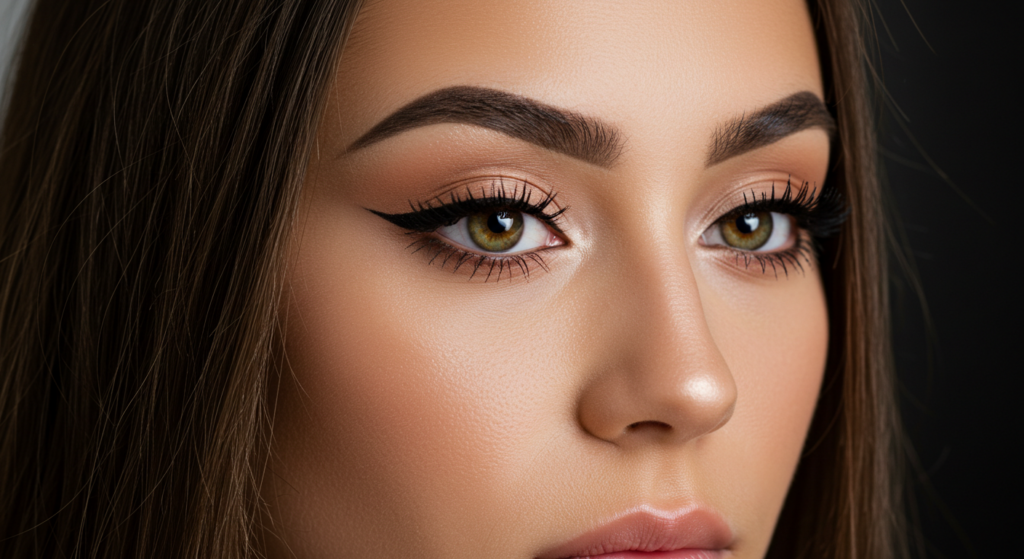
Canthal Tilt and Its Role in Overall Facial Harmony
It’s crucial to remember that canthal tilt is just one piece of the intricate puzzle that makes up facial harmony. The way the eyes interact with other features, such as the eyebrows, cheekbones, nose, and lips, plays a significant role in overall facial aesthetics.
- Eyebrows: The shape and position of the eyebrows can either complement or contrast with the canthal tilt. For example, arched eyebrows can further accentuate an upward canthal tilt, while a more straight brow line might soften it.
- Cheekbones: Prominent cheekbones can draw attention to the eyes and influence the perceived angle of the canthal tilt.
- Nose and Lips: The overall balance and proportions of the nose and lips also contribute to the overall perception of facial harmony, and the canthal tilt should be considered within this broader context.
A skilled surgeon performing facial aesthetic procedures will always take a comprehensive approach, considering all facial features and their interplay to achieve a natural and harmonious result. The goal is not necessarily to achieve a specific “ideal” canthal tilt but rather to enhance the individual’s natural beauty and balance their features.
Conclusion: Appreciating the Nuances of Canthal Tilt
The canthal tilt, though often a subtle feature, plays a significant role in shaping the appearance of our eyes and influencing the overall perception of our faces. Understanding the different types – upward, downward, and neutral – and the aesthetic characteristics associated with them can provide valuable insights into facial aesthetics.
Whether you were simply curious about this fascinating aspect of facial anatomy or considering cosmetic enhancements, I hope this comprehensive guide has provided you with a thorough understanding of canthal tilt. Remember that beauty is subjective and lies in the unique combination of our individual features.
If you are considering any surgical procedures to modify your canthal tilt or other aspects of your facial appearance, it is crucial to consult with a board-certified and experienced surgeon who can provide personalized advice based on your individual anatomy, goals, and expectations.
Thank you for taking the time to explore the nuances of canthal tilt with me.
Sincerely,
Dr. MFO
[Your Credentials/Affiliations Here]
[Your Website/Contact Information Here]
SEO Keywords: Canthal tilt, upward canthal tilt, downward canthal tilt, neutral canthal tilt, almond eyes, eye shape, facial aesthetics, cosmetic surgery, canthoplasty, canthopexy, blepharoplasty, lateral canthal tendon, medial canthus, lateral canthus, surgical eye lift, eye angle, youthful appearance, tired eyes, facial harmony, Dr. MFO.

